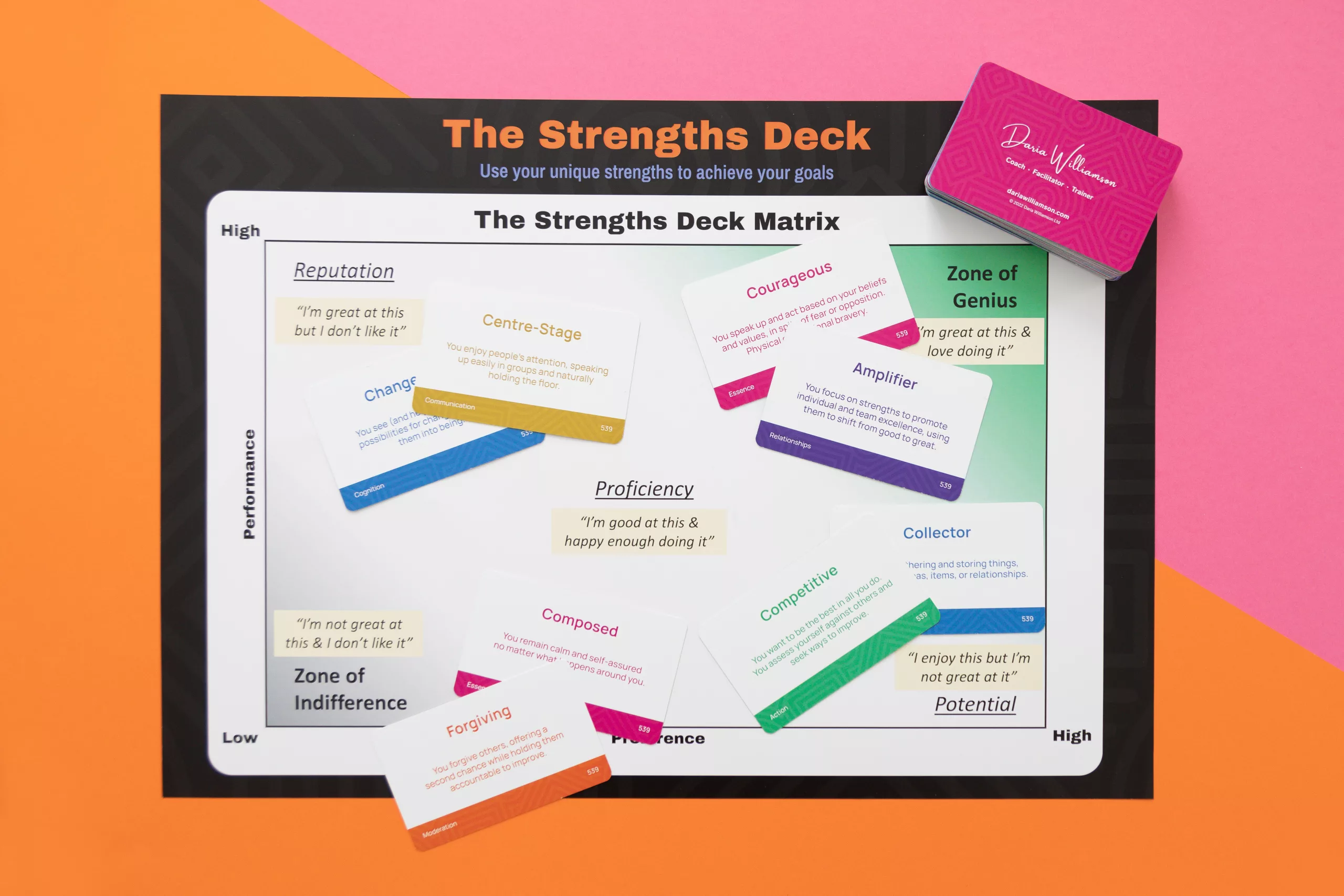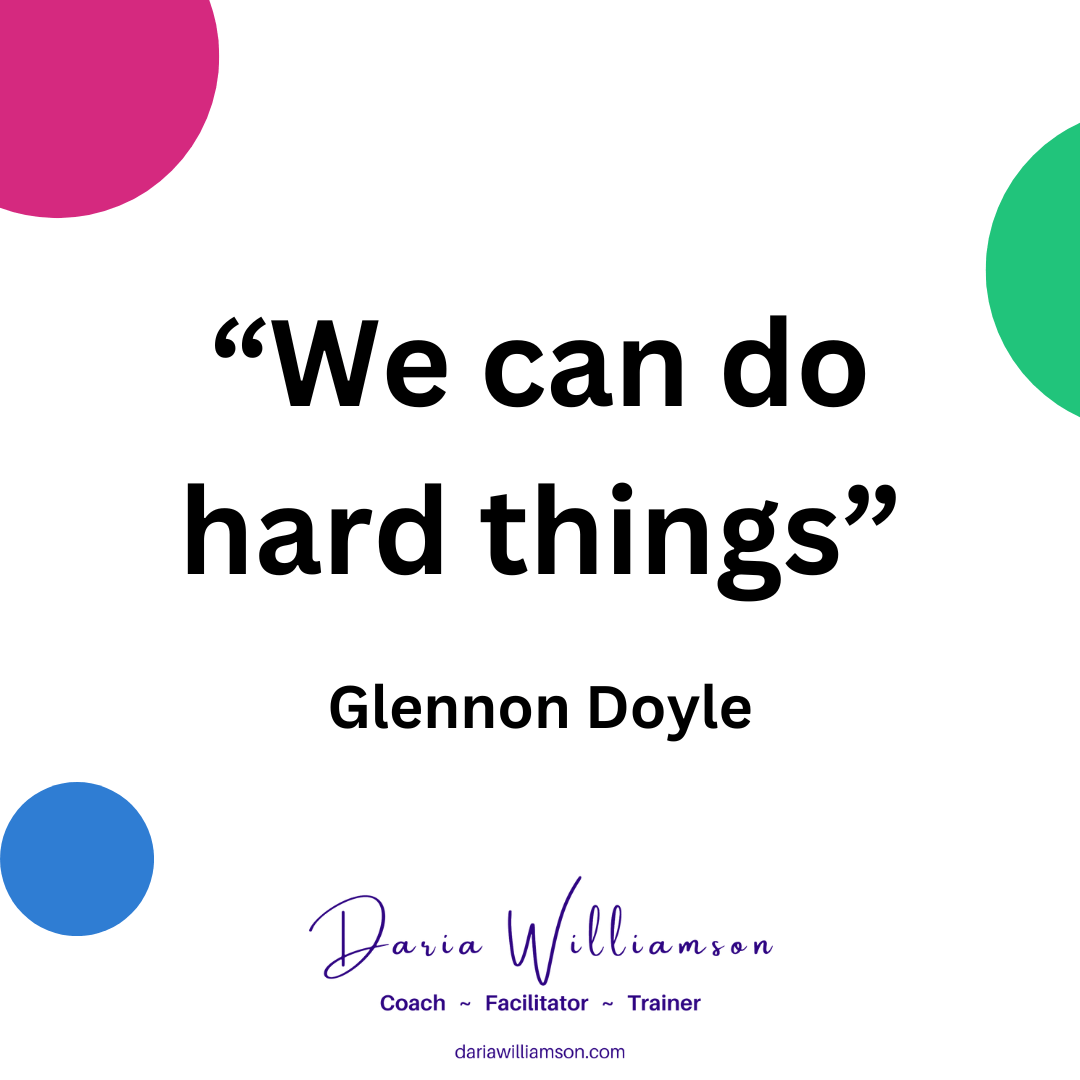Weakness. Most of us cringe inwardly even just hearing that word. We’ve been taught that weaknesses are something to be ashamed of, and there are plenty of people who seem to live by the belief that the truly great amongst us don’t have weaknesses. That’s about as far from the truth as we can get!
I have previously written about focusing on your strengths, not your weaknesses. I still wholeheartedly believe that playing to our strengths is a fantastic strategy. But I am also convinced that responding effectively to our weaknesses is something anyone can master.
In this post, I going to expand my thoughts on how you can get clarity about your key strengths and weaknesses, and then decide whether to flip, delegate or ignore your weaknesses.
Get clear on your strengths
In my earlier post, I suggested a couple of methods for discovering your strengths. I’m a firm believer in gathering independent data because I can almost guarantee that you have strengths you don’t realise. When we operate in our strengths, they feel so natural that we simply assume everyone else has them too.
The Strengths Profile approach is backed by extensive research and is one of the most user-friendly tools I’ve come across. That’s because it not only provides a report of your unique results but also gives specific advice for each item in the report. I re-take the assessment every 6-12 months which helps me gauge how my personal strengths-based development programme is progressing and allows me to keep an eye on my weaknesses to ensure they aren’t able to trip me up.
I’m an Accredited Strengths Profile Practitioner and would love to guide you through the Strengths Profile approach. I offer a range of packages to help you take a strengths-based approach to your life and work. To find out more, book your complimentary discovery call, where we’ll talk about where you’re at, what you want to achieve, and how I can help.
If you’re looking for a free tool, I recommend the free VIA Character Strengths Survey. While it has fewer strengths and less detail than the Strengths Profile report, it offers insights into your key strengths. As with the Strengths Profile, I’ve found it helpful to complete it regularly because this allows me to see patterns across time.
You can also ask friends, family and colleagues to tell you what they see as your strengths. It can be uncomfortable to ask, but most people are more than willing to tell you at least one thing that you do well. The longer you’ve known someone or worked with them, the more accurate their assessment is likely to be, because they will have seen you in a variety of situations over time. So, if they call out a strength that surprises you, take them at their word!
Validate the results
Once you’ve gathered your data, note your top 3-5 strengths. Then, write down how each strength shows up in your life, and how you invest in it. There are three primary ways we can “invest”: time, money, and energy (including the physical, mental, emotional & spiritual domains).

Flex your strengths
Now you know what your strengths are, get busy with them. Find ways to apply them to your current job and hobbies, and lean into them to build the kind of career or personal life that makes you happy.
For example, based on my Strengths Profile and VIA reports, my top-five strengths are Curiosity, Growth, Social Intelligence, Listener, and Drive. The way I use these in a “typical” week can involve:
- watching talks and reading a lot of non-fiction books (Curiosity, Growth)
- implementing things I’m learning (Growth, Drive)
- conducting coaching sessions with clients (Listener, Curiosity, Social Intelligence)
So, share your strengths with people around you. Ask your boss to put you on a special project where you can work to your strengths. Volunteer them for a charity or sports club. Mentor someone in your workplace or at a local school. Do anything you like that puts you in a position of flexing your strength – it will give you satisfaction, and will help others out at the same time.

And now for the weaknesses
It is completely normal to feel “icky” about admitting to our weaknesses. In part, that’s because our culture is thoroughly committed to mocking and hating weakness. And we unconsciously carry that attitude into how we think about ourselves and others. But it doesn’t have to be this way. The key here is to view them as things that are challenging for us, rather than personal or moral failings.
Most of us are all-too-aware of our weaknesses. They trip us up on a regular basis, which leave us thinking “I wish I’d done X differently”. Or they appear regularly on report cards and performance appraisals. But we don’t always openly acknowledge them – and what we aren’t clear about, we can’t work with.
Make a “relevant weaknesses” list
Lists are great at giving us clarity. So I suggest writing down 3-5 weaknesses that are relevant to your life right now. Please, do not be tempted to write down every single weakness, failing, and character flaw you think you might have, especially if the voice you hear it in is not your own. This is not an opportunity to rehash all the criticisms you’ve ever received! Stick only to the small handful of weaknesses that have a direct impact on you, your family and friends, colleagues, or dreams and goals.
You could ask people who know you well for feedback, or that might not sit right. Do this exercise in whatever way seems best to you. You’ll need that list to make the most of what I share in the next section. I’ll share a couple of my weaknesses, and use these as examples for flipping, delegating and ignoring.
My weaknesses and how they show up
The report cards from my school years have a consistent theme: “this mark does not reflect Daria’s true potential – she would do much better if she applied herself fully”. I didn’t “apply myself fully” because I have a high craving for novelty. So I quickly completed whatever tasks were assigned, and then wanted to move onto something new and different (you might have picked up that this is a reflection of my strengths of Curiosity, Growth and Drive – when we overplay strengths, they become hindrances rather than helpers).
I also absolutely loathe following instructions that seem stupid or counter-productive (ask me about how I’m totally at peace with the time I got detention in high school for jumping across a piece of grass we weren’t allowed to walk on!), or where someone won’t give an explanation for what they are asking of me. Eventually, I came to realise this is because I won’t engage if I don’t see the point. (You can see how my Curiosity can trip me up if I don’t reign it in!).
These weaknesses have the potential to derail my efforts if I’m not mindful about my approach, and how to accommodate them. I’ve come up with three ways to deal with my weaknesses: flip, delegate or ignore.
Flip, delegate or ignore your weaknesses
In my earlier post, I suggested the method of going neutral, not nuclear with areas of weakness. I still recommend that approach when it fits the situation. However, there are three additional ways to respond to weaknesses that crop up in our lives. These are to flip, delegate or ignore.
Flip
In the above section, I highlighted a couple of my potential weaknesses. I say “potential” because weaknesses can be strengths in disguise if we know how to flip them. I have been able to flip the two potential weaknesses above into strengths.
My high craving for novelty is linked to my Curiosity, Growth and Drive. I don’t want to be stuck with something if I’m not making progress. But I will bull-headedly stick with a skill or knowledge until I “get it”. I’ve applied this in my career by mastering knowledge and skills through reading, learning from people around me, and practising until I’ve nailed whatever it is I’m working on. Then I put my mastery together with my perspective to help others see new pathways to solve problems.
My Curiosity is also linked to the way I won’t engage if I don’t see the point. It isn’t (always!) just senseless rebellion. Once I understand the meaning and purpose of what I am asked to do (and it is aligned with my values), I’m 100% committed.
In the grass-jumping example above, my interpretation was that the rule was intended to keep us off the grass to avoid damaging it and turning it into a mud pit in winter. So, not touching the grass by jumping over it fulfilled what I understood as the intent. If the teacher had been able to make a decent argument for why it was wrong to jump over the grass, I might have accepted the detention with good grace. But all he did was repeat the rule, without explaining how ‘jumping over’ was equal to ‘walking on’. I went to that detention with a sense of injustice, because I didn’t see why I was being punished. (And I suppose the fact that I’m still telling the story more than two decades later suggests that I’m not quite over it yet!)
Delegate

I hate housework. Like really, REALLY hate it. It’s a major weakness (no potential weakness here, this is an actual weakness that I have no intention to flip). Which means that when I do it, I have a tendency to be half-hearted (resulting in generations of dust bunnies under the bed). I now delegate it to wonderful people who gain satisfaction from cleaning and have made it their business. It’s a win-win.
I’m an enthusiastic advocate for delegating potential (or actual) weaknesses that would take too much time and energy to flip. Delegation doesn’t have to involve money. You could “swap” your weakness with someone who has a weakness in one of your strengths. I did this for years with a colleague – I would proof-read his letters, and he would help me see when I needed to take a firm stance on a personnel issue.
My high craving for novelty means I usually want to move on before I’ve properly finished a task. To help me with this, I set goals and write to-do lists to keep me on track. And for certain tasks, I ask a colleague who is great at finishing things to check my work. I know I’ll hear about it if I haven’t crossed all my t’s and dotted all my i’s!
A note of caution for managers:
If you are a manager, use delegation judiciously – it’s not an excuse to farm out key parts of your role, and you can’t simply off-load tasks to your team under the guise of developing them (you don’t get paid the big bucks to pass the buck). However if a team member’s strength can support one of your weaknesses, find ways to leverage that, ensuring that they benefit from it.
Ignore
This one is probably the hardest to do. But sometimes we simply have to choose where we are going to fail. Jon Acuff suggests that we should “choose what to bomb” in his excellent book Finish (non-affiliate Amazon link).
Much as it troubles this recovering perfectionist to admit, we can’t be all things to all people, and we can’t be excellent in all areas. Take a good look at your weaknesses, and decide if there are any that you can’t or won’t flip or delegate. Congratulations! You’ve just created your “ignore” list!
One of the areas that I have chosen to ignore is tasks that require repetitive activity. I could never be a scientist. My high craving for novelty means that doing an experiment multiple times to prove its repeatability is my worst nightmare! So I self-select out of roles that involve that sort of activity and am up-front about this weakness any time it might be relevant to the work I’m doing. This gives the people I work with the chance to decide if this is a deal-breaker.
You might need to have some tough conversations with family, friends, boss and colleagues about where you’re going to bomb. But if you can’t flip it, and you can’t delegate it, the only option left is to accept that it will always be with you, and no amount of time, energy and money will resolve it.
Long story short…
Once you know your strengths, go crazy with them – life feels so much better when we’re working to our strengths. And choose what you’ll do with your weaknesses – flip, delegate or ignore them. Life’s too short to keep beating yourself up!
Any discussion of personal strengths would be incomplete without me letting you know about The Strengths Deck.
I created it to put the power of strengths in your hands. If you want to learn about your unique strengths fingerprint and how to make the most of your amazing strengths, click the logo to find out more, or make a booking for your free, 30-minute call to talk about how we can get your strengths working for you.






